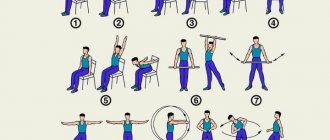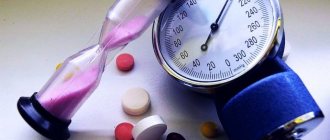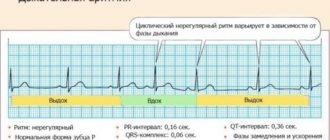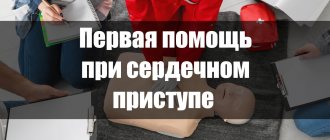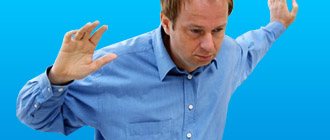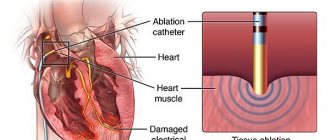Complex of therapeutic exercises for cardiovascular diseases
REMEMBER:
1. Do each exercise no more than 5 times
2. Do each exercise smoothly, slowly
3. Do each exercise at full amplitude, but without tension
VASCULAR COMPLEX
I.P.: sitting on a chair, legs at right angles, back pressed against the back of the chair
1. Hands (palms) on your knees. Raise your palms without lifting them from your knees, while simultaneously pulling your feet towards you (1-2-3-4 inhale). Lower, relax (5-6-7-8 exhale)
2. Raise your leg (freely, without tension), pull your fingers towards you (one time) - I.P. (two). Do it alternately with both legs.
I.P.: sitting on the edge of a chair, back straight
3. "Accordion". I.P.: Hands on knees, heels together - toes apart. Without lifting you from the floor, spread your heels to the sides (one time), connect your heels, spread your toes (two times), etc. until the legs are extended. Do the same in the opposite direction to I.P.
4. "Caterpillar". I.P.: legs at right angles. Step forward with your toes to the position of outstretched legs, and do the same back to I.P.
5. “Walking from under a chair.” I.P.: Stretch one leg forward on the heel, the foot as far as possible, the other leg on the big toe under the chair. Without lifting your feet from the floor, move them forward and back, alternately changing their position.
6. Put the straight leg to the side (one time), in I.P. - two. The knee is straight, the toe is extended, do not turn the pelvis! Same thing with the other foot.
7. Draw a circle (large) with your big toe around the front leg of the chair, in one direction and the other. Same thing with the other foot. (Except stroke)
8. Hands locked on the chest - inhale; arms forward, palms forward - exhale.
7. I.P.: Sit deeper on a chair. The body, shoulders are relaxed, arms are freely lowered down. Turn your palms outward around the axis, bring your shoulder blades together (hold) - in IP. The shoulder joints work!
8. Shoulders up (inhale) - lower sharply (exhale)
FOR THE NECK
(start all exercises after preliminary stretching of the neck)
I.P.: sitting on a chair, legs at right angles, back pressed against the back of the chair, hands on the belt, shoulders down, top of the head towards the ceiling
No. 1 - No. 5 do 1 time each!
1. “Breakfast is on your knees.” Pull your head down, pull your chin towards the navel (but not towards the thyroid gland!). Smooth slow return to I.P.
2. Stretch your neck, look up without throwing your head back (stretch the front side of the neck)
3. Smoothly turn your head to the side until it stops, tilt it back (chin slightly up) and see the shoulder blade. Smoothly raise your head, turn, relax. The same - in the other direction. Do not perform a combined movement!
4. Keep your head straight, look forward, try to lower your ear to your shoulder (there should be a pulling sensation on the opposite side of the neck). Smoothly return to I.P., relax. The same - in the other direction.
5. Hands on the belt. Smoothly turn your head to the side -> press your chin to your collarbone -> look into the ring formed by your hand and see the floor -> smoothly return to IP. Do not move your elbow! The same - in the other direction.
No. 6 - No. 8 do 3 times every other day
6. Hands locked at the back of the head, elbows to the sides, shoulders down. Press your head on your hands (one or two) and gently relax (three or four)
7. Hands on forehead. Press your head forward through resistance. Hold for 2-3 seconds.
8. Place your palm on your head above your ear (pad of the thumb, fingers up). Press your head on your hand to gently relax. The same thing on the other side.
BREATHING EXERCISES
I.P.: sitting on the edge of the chair
1. Stretch your legs forward, grab the back of the chair with your hands (inhale). Lean forward, stretch, straighten your shoulders, bring your shoulder blades together (exhale). Don't throw your head back!
I.P.: sitting on a chair
2. Use your hand to reach the opposite ear over your head (vertical swing). Keep your head straight!
3. Reach the ear from the back (horizontal swing). Keep your head straight!
4. “Wash, comb your hair, straighten your collar”
EXERCISES WITH A STICK
I.P.: sitting on the edge of the chair
1. Roll a stick with your feet
2. Roll with your hands on your knees: palms (like rolling out dough), ribs, back, index finger
3. With both hands at the ends: lift up, straighten your elbows, reach for the stick (inhale), lower the stick (exhale)
4. Roll the stick behind your back over your shoulder blades, neck, and back of your head. No stress!
5. Place the stick vertically on the floor between your legs, stretch your legs, hold the stick at shoulder level with your hands -> lean back (inhale) -> stretch forward for the stick - work your stomach and back (long exhale). Look at your hands!
6. In the same position. The lower back is straight - inhale. As you exhale, move your hands down the stick (stretch your legs)
7. Stick on the lower back, palms forward -> roll the stick along the lower back
8. Stick from behind in lowered hands. One hand holds the stick by the edge, the other pushes the stick up. The upper hand is relaxed and slides along the stick, the lower hand is tense. Stick up - inhale, in I.P. - exhale
9. "Scarf". Stick on the knees. Circular movements around the body through retracted shoulder blades
10. “The Well.” Stick on your knees: slowly lift up, pressing towards you: stomach, chest, neck. In a circular motion, return to your knees. Likewise - to yourself
STANDING BEHIND A CHAIR
I.P.: hands on the back of the chair, stand a step away from the chair, feet together
1. Without lifting your foot off the floor, step from toe to heel. The back is straight, the stomach is pulled in!
2. Stand on your toes, stretch up -> roll onto your heels, pulling your toes towards you
3. Shake both legs alternately (like a cat shakes off water)
4. Spread your heels to the length of your feet, toes apart -> half-squat (knees spread to the sides, your back “slides along the wall”), stay in the most uncomfortable position -> straighten up. The back is straight, the stomach is pulled in!
5. Repeat No. 3
6. Place your foot on the chair seat -> swing return of the leg to IP (small amplitude)
7. Swing the leg over the back of the chair and back to IP (large amplitude)
8. Tilt the chair forward on the front legs, holding the back of the chair, and stretch forward. Don't tilt your head, look at the back of the chair!
DIAPHRAGMAL BREATHING
I.P.: one hand on the chest, the other on the stomach. As you inhale, inflate your stomach, as you exhale, pull it in, helping with your hand. Do not breathe through your chest (hand control)!
Rules for training for heart disease
November 23, 2016
How to play sports with problems with the cardiovascular system without harming yourself.
If a person has heart problems, this does not mean at all that he should forget about any physical activity and try to protect himself from any unnecessary body movements. Exercise can do much more good for your heart than trying to protect it from stress. The main thing that needs to be taken into account before you start training is that only a specialist can prescribe exercises that will not harm, but will help you. Not a single magazine article or TV program will tell you about the workouts that are right for you, because cardiovascular disease is a very serious problem that requires an individual approach to solve.
What you need to know for sure is that small exercise helps your heart work. For example, slow walking, swimming or breathing exercises help activate the heart. After all, working muscles require more oxygen, which is why the heart muscle contracts more often and stronger, since it is this muscle that determines how quickly blood will flow into our organs and limbs, which saturates the body with oxygen. When the heart works a little faster than usual, it trains, which activates its metabolism, which enhances the recovery process. In addition, the muscles themselves, working rhythmically, alternately compress and weaken the blood vessels, thus helping the heart to pump blood throughout the body and activating the entire cardiovascular system. So, in simple terms, we can explain why small amounts of physical activity are beneficial for every person and even for those who suffer from heart disease.
If the load increases sharply, the heart will no longer cope with the load, which can bring very unpleasant and even life-threatening consequences. One of the possible consequences: the heart muscle will not be able to provide all organs and muscles with oxygen, which will simply be needed in large quantities during serious and prolonged exercise, which is why it is possible to reach the “oxygen limit”, when the load rapidly destroys the body, and not only the heart , but, for example, the brain.
Therefore, another rule of training for heart disease is a gradual increase in loads. So, if you approach this issue wisely and constantly consult with your doctor (it’s even better to do your first workouts right at the cardio center), your heart muscle will be trained, your body as a whole will be stronger, and your well-being will improve.
It is necessary to understand that even if you increase the load gradually, starting with walking at a quiet pace, some problems may arise. So if you feel any discomfort, stop training immediately. Symptoms may include:
- pain in the chest area,
- strong heartbeat,
- prolonged fatigue or dizziness,
- nausea,
- the appearance of leg cramps,
- difficulty breathing for more than 10 minutes,
- the appearance of a pale skin tone or increased moisture content in the body (this can be understood, for example, by swelling).
It is precisely because the risks are high, but the need for physical activity exists, and constant supervision by a specialist and an individual approach to training are necessary.
Tags:
- Sport
- Workout
- cardiovascular diseases
To leave a comment you must be an authorized user
